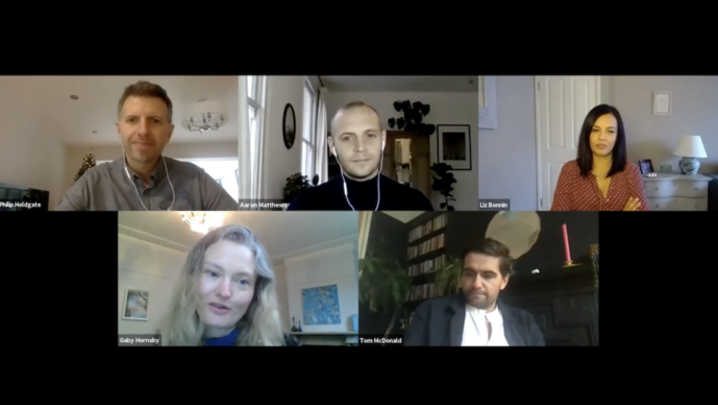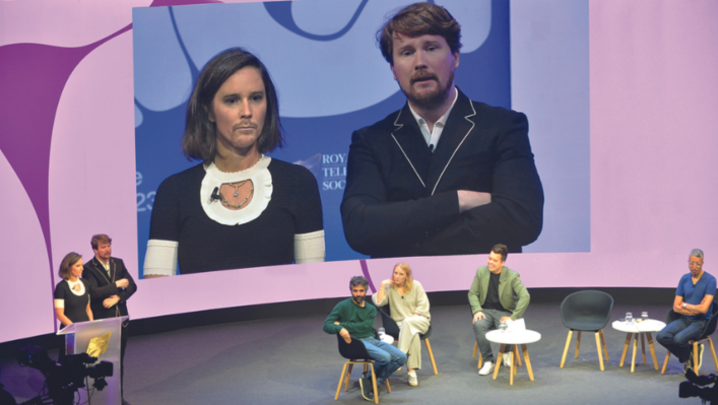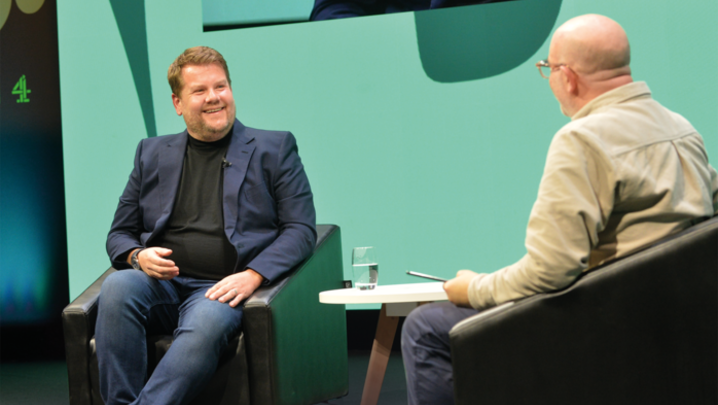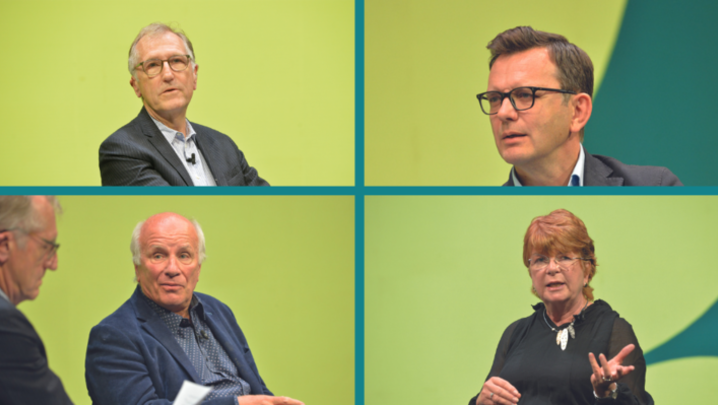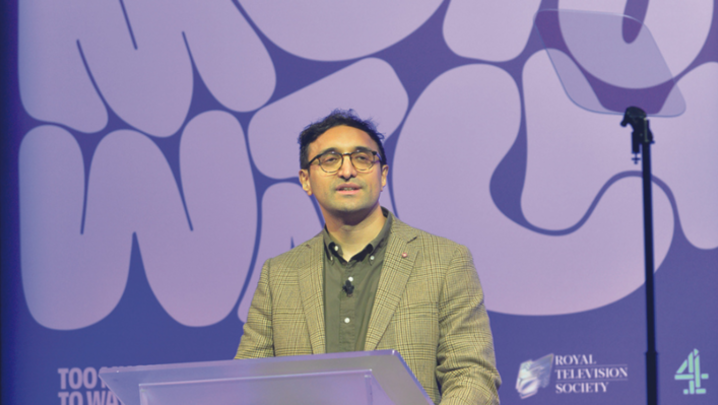A nations and regions RTS event focuses on how every part of the industry is attempting to cut carbon emissions.
The year 2021 is likely to be seen in future as the point when UK broadcasters and producers finally got serious about mitigating their impact on climate change.
From practical steps to shift production on to a sustainable footing to weaving environmental issues into storytelling and helping audiences to understand what’s at stake – all formalised in the Climate Content Pledge announced at Cop26 – TV’s green ambitions have never been more apparent.
A joint RTS London and RTS Scotland event, “Behind the scenes: Sustainability and TV”, discussed these and related issues in a wide-ranging debate held the week after the Cop26 climate summit ended in Glasgow.
The audience heard how BBC Scotland had recently started to use electric vehicles for its reporters. “We need to lead by example in the changes that we make,” said Kevin Keane, environment and transport correspondent at BBC Scotland News. “If we can demonstrate that we’re making the news sustainably and continue to do a lot of interviews online, rather than doing them on location, I think people will sit up and take notice.
“Here, there is no desire to return to that more carbon-intensive way of news gathering. Sending a crew on a 150-mile round trip to get a 15-second interview for a news package no longer makes sense.” One can only hope that other newsrooms follow suit.
Keane said that, when he made a pre-Cop26 documentary for BBC Scotland earlier in the year, he deliberately set out to empower audiences by highlighting how lifestyle choices could reduce individuals’ carbon footprints.
Chloe Fletcher, a sustainability data scientist at BBC R&D, has examined the environmental impact of the different media services the BBC provides. For every platform, she found that the devices in people’s homes used more energy than the BBC’s distribution chain. Overall, home equipment (including mobile phones) accounted for more than 90% of the total energy use related to the BBC’s activities.
This was counter-intuitive since TV transmitters are usually thought of as being big, power-hungry towers on hills compared with TV sets and set-top boxes. But when you add up their total contributions, it’s the latter that are most energy intensive.
Moreover, a transmitter network uses the same amount of power regardless of how many people are viewing – unlike, say, iPlayer, which consumes more energy as more people watch.
In terms of energy use per hour, satellite, cable and IPTV are all very similar – terrestrial TV needs less energy because it does not require a set-top box. Recently, however, set-top boxes have become more energy efficient, while TV sets are using more power because many households have bought bigger screens with higher picture resolution. “We’re trying to come together as an industry to see how we can address this trend,” said Fletcher.
One myth she exploded was that streaming generates large amounts of carbon – a report in 2019 suggested that streaming produced the equivalent of 3.2kg of CO2 emissions per hour, the same as driving 18km in an average petrol car. In fact, the Carbon Trust published figures earlier this year to show that streaming produced the equivalent of 55g of CO2 per viewer hour – the same as boiling an average kettle three times.
So, one objective is to reduce the power consumption of electronic devices, principally TV sets, by collaborative initiatives, and to persuade consumers to switch to a renewable energy provider, said Fletcher.
She added: “Interestingly, smartphones and tablets are so low-powered that more energy is consumed per hour of watching via the internet by your home router than by the device itself. But this is not true if you’re viewing on a TV or a computer as these use three to 10 times more energy per hour of watching.”
Even so, she said, compared with transport, eating meat and dairy products, or heating your home, viewing TV was not a big source of carbon emissions. She emphasised that, while consumer behaviour was important, the focus had to be on “collaborative change at a systemic level”.
Carys Taylor, director of Albert, which aims to foster sustainable production and raise awareness of green issues in content, explained that her organisation’s activities fell into three main categories. These were: educating the industry on its environmental impact; certifying sustainable production by using Albert’s carbon calculator; and advising on how TV programmes could help educate audiences on subjects such as climate change and biodiversity.
Taylor said it was imperative that it was not left to the makers of natural history or news programmes to draw attention to extreme weather events and climate-related famine.
“Programme-makers across all genres need to reflect environmental themes in their content,” she insisted. “There should be empowering, optimistic stories that can show you the solutions that are available now. Environmental themes can be woven into pretty much all types of content… There’s a huge creative opportunity here.”
Albert’s Planet Placement initiative encourages broadcasters, streamers and programme-makers to “normalise” environmental themes in their shows. Taylor said: “As a society, we’ve glamorised a lot of behaviours that aren’t sustainable. There’s a way to embed this stuff in storylines. It doesn’t have to be catastrophising – so-called cli-fi – but normal, human stuff.
“For instance, in a soap you could have a storyline about a gas engineer reaching retirement who’s thinking of retraining so he can fit ground-source heat pumps.… It’s important to find ways that aren’t preachy or all doom and gloom...” Russell T Davies’s It’s a Sin had shown the power of TV to affect people’s behaviour: it had increased HIV awareness, with a significant uptick in calls to HIV helplines.
Keane added that, as a recent convert to driving an electric vehicle, he was surprised that a soap hadn’t used an EV charging point as a focal point for local gossip.
“Audiences take note of what we’re doing,” Taylor insisted. “TV has to drive change because we have unique access to millions of people. We’ve got a lot to be proud of.”
The event’s chair, Richard Parsons, COO of international production at Sony Pictures Television, highlighted how his own company had worked to reduce its carbon footprint in the US since 2010 by taking part in initiatives such as the Sustainable Production Alliance. “There’s a no-idling rule both on sets and in studios,” he explained. “Since 2019, across both film and TV, we’ve achieved sustainable production status in all our output in the US. The challenge is to push that out internationally, which we’re in the process of doing.”
Joanna Langan, production manager at factual specialist Raise the Roof Productions, said that her company was working across the board to reduce its carbon footprint and looking at everything from more sustainable means of transport to using biodegradable cutlery.
The pandemic had led to less energyintensive ways of working as many people worked from home and meetings had shifted online.
Over the past year, this reduction in travel, said Taylor, had reduced the carbon emissions associated with producing an hour of TV from 9.2 tonnes to 4.4 tonnes.
Report by Steve Clarke. ‘Behind the scenes: Sustainability and TV’ was an RTS London and RTS Scotland event, held on 18 November. The producers were Liz Cooke and Aradhna Tayal.



